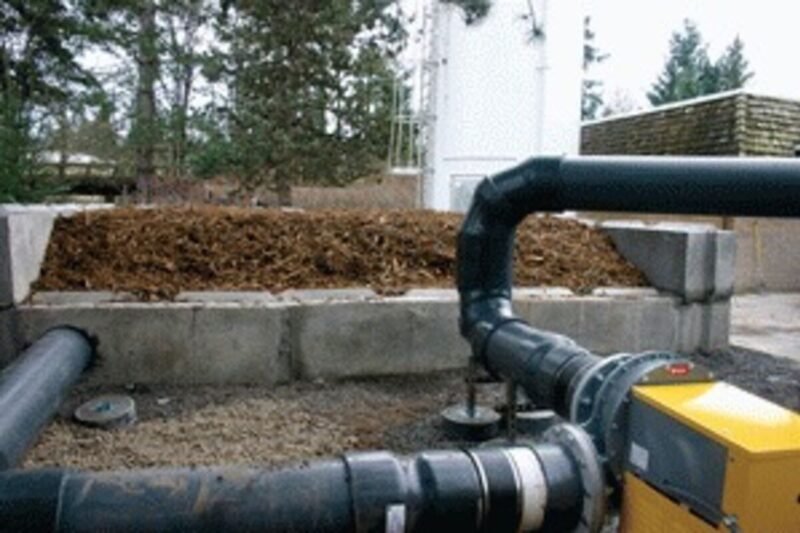Sean C. Morgan
Of The New Era
The odor emanating from the Sweet Home wastewater treatment plant should be much reduced now with the recent completion of a new air filter system.
The new filter started running March 6, said Doug Atkinson, project manager for OMI, Inc., which operates Sweet Home’s water and wastewater treatment plants. “It ran all night, and it’s been running since. It seemed to make a noticeable difference.”
Sweet Home has been dealing with a persistent, far-reaching odor problem from the wastewater treatment plant since replacing aeration equipment in one of the basins at the plant in September 2006, prior to OMI taking over management and operation of the plant.
Atkinson drove through Sweet Home neighborhoods checking for the odor the day after the filter was installed, he said, and he couldn’t detect it.
A temporary cover remains on the basin that causes the odor, but building permits are approved for the installation of a permanent aluminum dome over the basin. Atkinson thinks it will be finished in May.
“We’re pushing them as hard as we can,” Atkinson said March 7. “The company that’s assembling the top was here yesterday doing some surveying.”.
The installation will include a couple of days when the basin won’t be covered, possibly allowing the odor to escape, Atkinson said.
In the meantime, Atkinson said, theoretically the new filter should alleviate most of the problem, with the temporary cover in place.
To demonstrate, he held a lit cigar up to an opening in the tarp, explaining that the basin under the cover was running a negative pressure. The smoke from the tip of the cigar was drawn under the cover by the filter.
But Monday night and Tuesday, however, the odor was particularly strong throughout the west end of Sweet Home.
“We don’t know how well it’s going to work without the permanent cover,” Public Works Director Mike Adams said. Officials are still trying to isolate a common time or cause for the odor, but they haven’t found anything in common yet.
The filter, constructed in-house by OMI employees, is essentially a large fan drawing air off the top of the basin through a 14-inch header into a filtration bed. The header runs along one edge of the filtration bed with 6-inch perforated pipes leading away from it across the filtration bed.
Air leaves the 6-inch pipes through the perforations and is filtered through two feet of gravel, 18 inches of bark mulch and then a foot of hog fuel, Atkinson said.
Buried a foot deep in the mix is an irrigation system that keeps the interior of the bed moist, allowing microbes to work, “biologically cleaning it, scrubbing the odors.”
The entire project, including the filter and the cover will cost around $200,000, Atkinson said. The filter cost about $70,000, less than it would have cost had it gone out to a contractor.
“It’s green-friendly,” Atkinson said. “We’re not introducing any chemicals.”
That keeps down regular expenses for operating the filter, Atkinson said. Every three or four years, he believes, the city simply will need to add more bark and hog fuel to the top of the filter.
“It’s been a very frustrating time for everyone, for Mike (Adams), for us,” Atkinson said of trying to solve the problem. The city and OMI have explored a variety of solutions, among them ranging from adding chlorine or charcoal scrubbers.
“We’re trying to seek solutions, both short term and long term,” Adams said, but those solutions cannot cause the city to violate its discharge permit.
It’s taken some time, but some resolution is underway, Atkinson said.
Still, it’s unlikely that odor from the plant won’t ever be noticeable, he said. “It’s the product we work with.”





